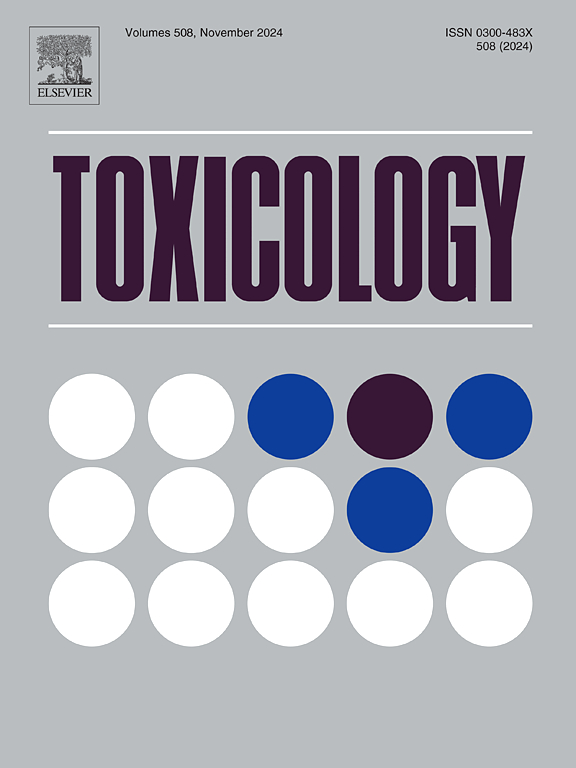Hypoxia-inducible factor 1α modulates acrolein-induced cellular damage in bronchial epithelial cells
IF 4.8
3区 医学
Q1 PHARMACOLOGY & PHARMACY
引用次数: 0
Abstract
Acrolein, a highly reactive α,β-unsaturated aldehyde, is a widespread environmental pollutant. It is generated during the incomplete combustion of materials such as tobacco smoke, petrol, coal, forest fires, and plastics, as well as from the overheating of frying oils. Acrolein is known to induce cellular damage and oxidative stress. This study investigates the critical role of hypoxia-inducible factor 1α (HIF-1α), which is a transcription factor required to regulate cell survival and angiogenesis, in protecting bronchial epithelial cells from acrolein-induced cytotoxicity and DNA damage under normoxic and hypoxic conditions. To our knowledge, no prior study has comprehensively evaluated the effects of HIF-1α on cellular responses to acrolein under normoxic and hypoxic conditions in vitro. Therefore, the goal of this study was to explore how silencing HIF-1α influences cellular responses to acrolein, and our study focused on changes in cytotoxicity, metabolic activity, DNA damage, and oxidative stress using the BEAS-2B cell line. We observed enhanced cell damage and reduced viability in cells exposed to acrolein when silenced with HIF-1α, particularly in hypoxic environments. While results indicate that silencing HIF-1α significantly increases cytotoxicity and DNA damage under hypoxia compared to normoxic conditions, oxidative stress indicator levels did not rise noticeably under hypoxia following HIF-1α silencing. This research warrants further investigation to indicate the importance of HIF-1α in adapting to environmental and hypoxic stressors, which are commonly found in chronic lung diseases and ischemic conditions.
缺氧诱导因子1α调节丙烯醛诱导的支气管上皮细胞损伤
丙烯醛是一种高活性的 α、β-不饱和醛,是一种广泛存在的环境污染物。它产生于烟草烟雾、汽油、煤炭、森林火灾和塑料等物质的不完全燃烧过程中,以及煎炸油的过热过程中。众所周知,丙烯醛会诱发细胞损伤和氧化应激。低氧诱导因子 1α(HIF-1α)是一种调节细胞存活和血管生成的转录因子,本研究探讨了低氧诱导因子 1α在常氧和低氧条件下保护支气管上皮细胞免受丙烯醛诱导的细胞毒性和 DNA 损伤的关键作用。据我们所知,此前没有研究全面评估了 HIF-1α 在体外常氧和缺氧条件下对细胞对丙烯醛反应的影响。因此,本研究的目标是探索沉默 HIF-1α 如何影响细胞对丙烯醛的反应,我们的研究重点是使用 BEAS-2B 细胞系观察细胞毒性、代谢活性、DNA 损伤和氧化应激的变化。我们观察到,沉默 HIF-1α 的细胞在暴露于丙烯醛时细胞损伤加剧,存活率降低,尤其是在缺氧环境中。研究结果表明,与常氧条件相比,在缺氧条件下沉默 HIF-1α 会显著增加细胞毒性和 DNA 损伤,但在缺氧条件下沉默 HIF-1α 后,氧化应激指标水平并没有明显上升。这项研究表明,HIF-1α在适应环境和缺氧应激源(常见于慢性肺部疾病和缺血性疾病)方面具有重要作用,值得进一步研究。
本文章由计算机程序翻译,如有差异,请以英文原文为准。
求助全文
约1分钟内获得全文
求助全文
来源期刊

Toxicology
医学-毒理学
CiteScore
7.80
自引率
4.40%
发文量
222
审稿时长
23 days
期刊介绍:
Toxicology is an international, peer-reviewed journal that publishes only the highest quality original scientific research and critical reviews describing hypothesis-based investigations into mechanisms of toxicity associated with exposures to xenobiotic chemicals, particularly as it relates to human health. In this respect "mechanisms" is defined on both the macro (e.g. physiological, biological, kinetic, species, sex, etc.) and molecular (genomic, transcriptomic, metabolic, etc.) scale. Emphasis is placed on findings that identify novel hazards and that can be extrapolated to exposures and mechanisms that are relevant to estimating human risk. Toxicology also publishes brief communications, personal commentaries and opinion articles, as well as concise expert reviews on contemporary topics. All research and review articles published in Toxicology are subject to rigorous peer review. Authors are asked to contact the Editor-in-Chief prior to submitting review articles or commentaries for consideration for publication in Toxicology.
 求助内容:
求助内容: 应助结果提醒方式:
应助结果提醒方式:


